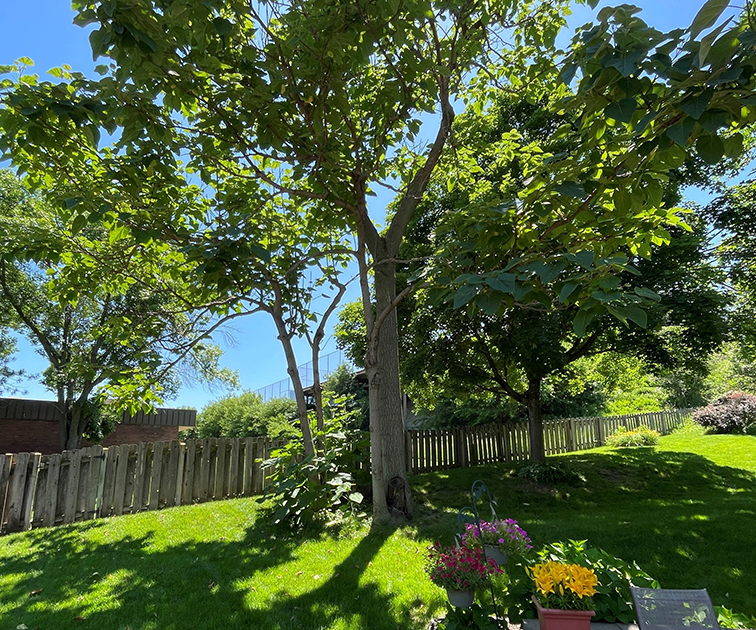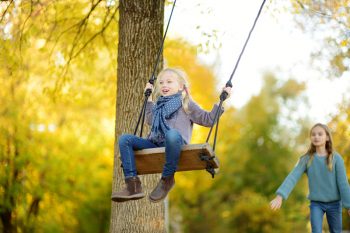Do you know how trees help you?

Trees have many benefits. They beautify yards and can help provide privacy on a property. Their limbs can support treehouses and swings. And their leafy canopies provide much needed cooling during the hot summer months.
“The cooling effect under a shade tree can amount to a 20 degree difference,” said Mike Norris, OPPD senior utility forester. People working and playing outside during heat waves welcome that shade, one of the many benefits of trees.
For the past 27 years, Morris has worked with OPPD’s Forestry group to educate the public about trees, especially why it is important to plant the right tree in the right place.
One way Norris does that is by directing people to OPPD’s Arboretum at 108th and Blondo streets in northwest Omaha. The 26-acre facility has hundreds of trees and other plantings, providing beauty year-round. Signage and plant markers help educate visitors as to what they are seeing.
Here are more a few benefits of trees.
Trees help clean the air
Trees remove pollution from the atmosphere, improving air quality and human health.
One acre of forest absorbs six tons of carbon dioxide and releases four tons of oxygen, enough to meet the annual needs of 18 people.
Trees contribute positively to people’s health
In addition to providing clean air, studies have shown that neighborhood trees can reduce stress, improve overall health and development in children, and encourage physical activity.
Studies also have shown that a view of trees can speed up healing times for hospital patients.
And those shade canopies also reduce dangerous ultra-violet rays by about 50 percent, minimizing harmful effects that can lead to skin cancer.

Trees help clean drinking water
Trees help protect water quality by capturing, storing and using rainwater, reducing runoff and trapping pollutants.
Forests, which naturally filter rainwater, provide drinking water to more than 150 million people in the U.S.
Trees help save energy
A properly placed tree can reduce air conditioning need of a home or building by 30% and can save 20 to 50% in energy used for heating.
Planting trees (or taller plants) around sun-exposed windows helps regulate indoor temperatures year-round. In addition to filtering sunlight, trees also act as a wind break, helping to soften frigid winds.
Trees are a food source
Trees provide a variety of fruits, nuts, saps, and even some tree barks and leaves for human consumption. Many wildlife species count on foliage, nectar, pollen, berries, seeds and nuts for their survival. Pine needles provide food for moth and butterfly larvae; cherry trees are pollinators for early season bee species;. and songbirds love Dogwood and Pagoda fruits, to name a few.
Trees provide shelter
Trees provide a vital wildlife habitat for birds, squirrels, bugs and more. But they also create special spaces for people, providing cover for a quaint seating area or a secret hideaway, like the one the Hedrick grandkids created.
If you are thinking of planting a tree, there are lots of reasons to dig in.
Sources. Arbor Day Foundation, Nebraska Statewide Arboretum, U.S. Forest Service, Energy.gov.

Paula Lukowski has more than 34 years of corporate communications experience. By far, her favorite aspect of that role has been profiling the great work done by OPPD employees and retirees. A master gardener, Paula and her husband Mark have two grown children and two grandsons.
View all posts by Paula Lukowski >







